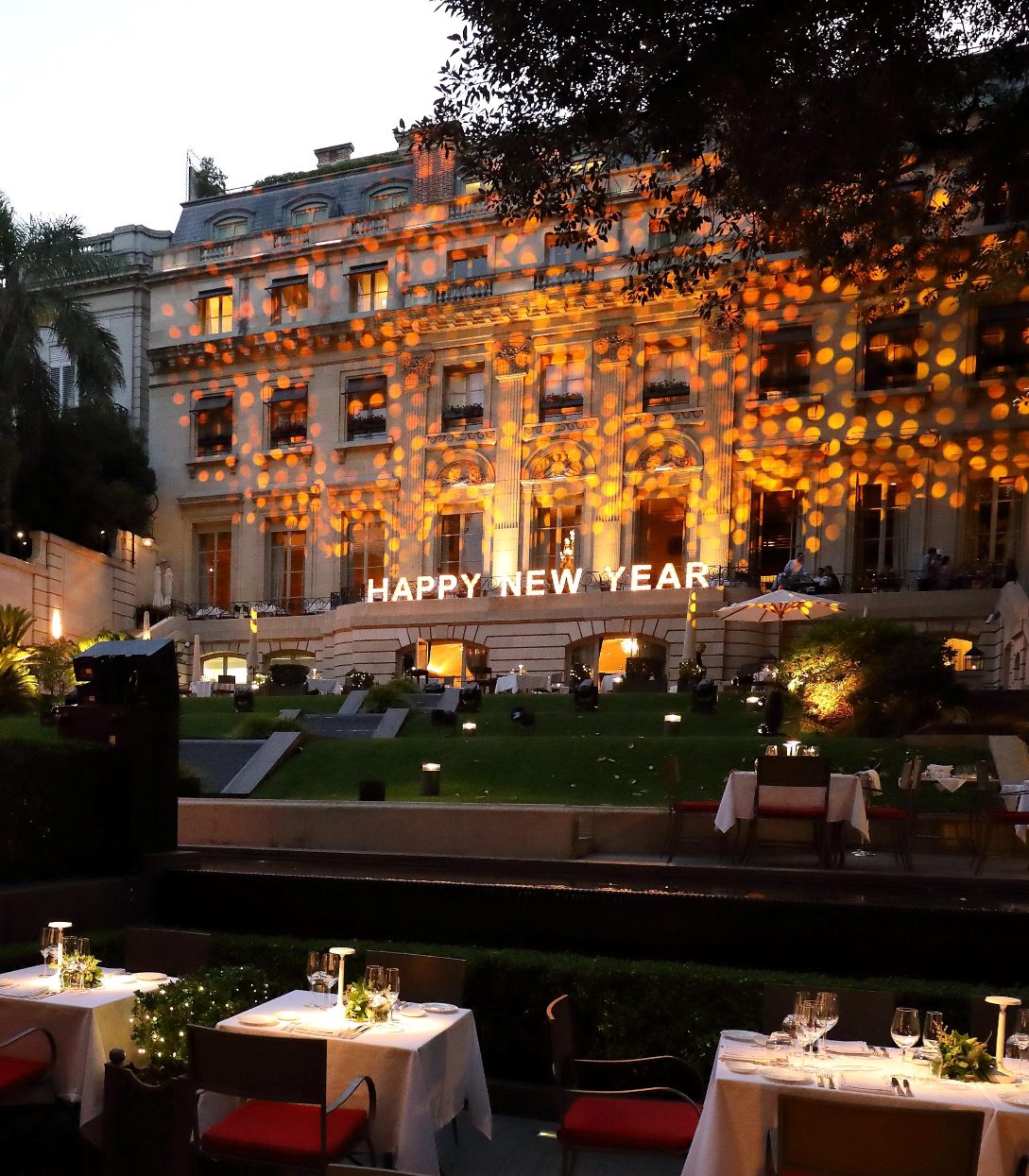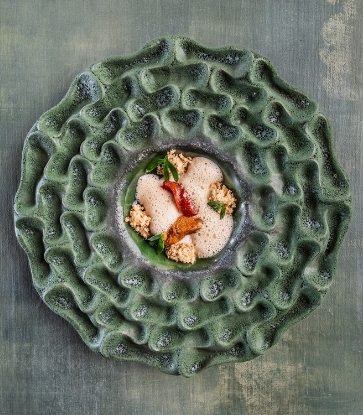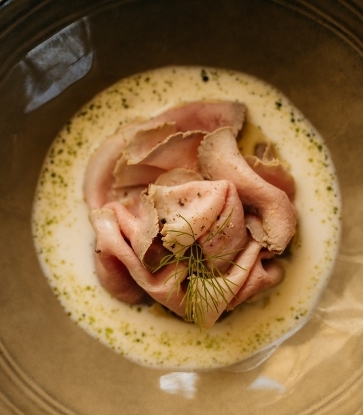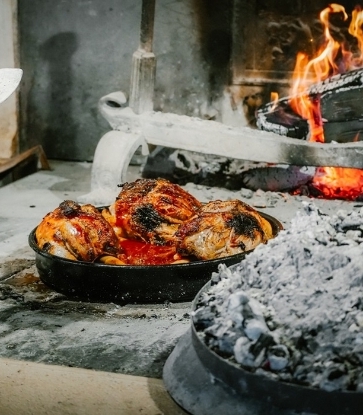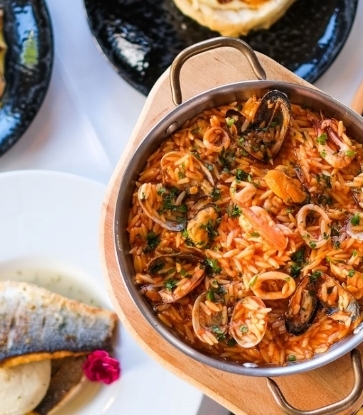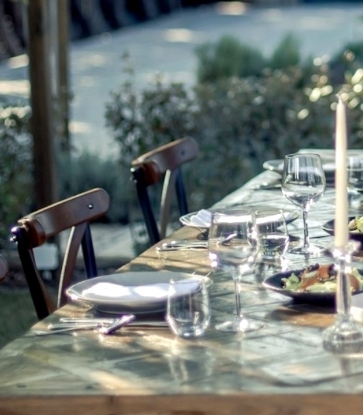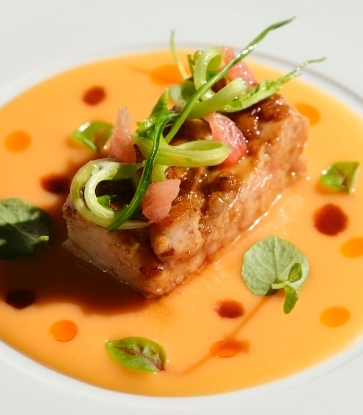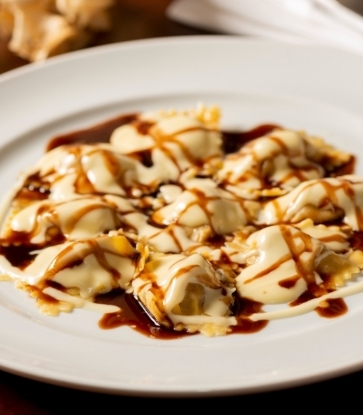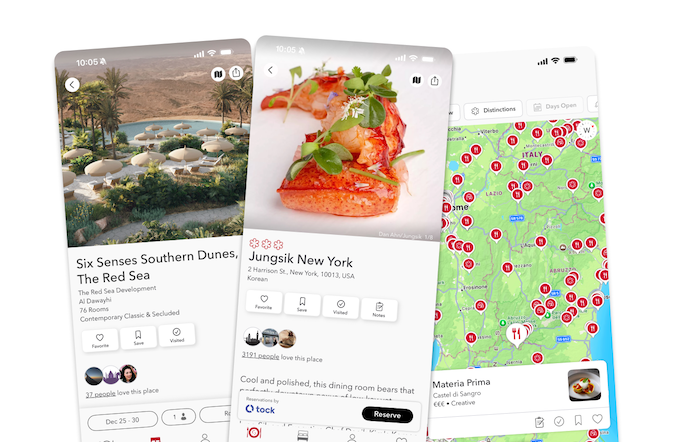1. Spritz Happens — But Not at Dinner
For many travelers, vacation time means cocktail hour, and Italian vacation time means indulging in aperitivi like the Aperol or Campari Spritz. But these palate-whetting drinks are best enjoyed at a bar before sitting down to dine. Ordering a cocktail at lunch or dinner in a traditional restaurant or trattoria is a quick way to get side-eye from your server.The venue may not even be equipped to prepare it.
Sodas and sugary drinks are also a no-go at mealtimes, according to Michelino Gioia, the longtime chef at MICHELIN-Starred Il Pellicano, the on-site restaurant of the historic hotel of the same name in Porto Ercole. “It’s bad form to move through the menu with a Coca-Cola, in my opinion,” Gioia says, and not just in fine dining restaurants like his, either. “In a pizzeria, sure, it’s OK, but even in a trattoria, it’s to be avoided,” he adds. When in doubt? Fizzy water and wine are always safe bets.
And, of course, there’s one drink request that famously makes servers in Italy cringe: the post-meal cappuccino. Michel Dansou, a waiter at Florence’s Il Santo Bevitore, confirms this is always a don’t. “When you’ve finished eating, never ask for a cappuccino,” Dansou says. “Never after lunch, and never after dinner.”
It’s not about arbitrarily avoiding cappuccino in the afternoon, but more about not mixing the milky, heavy beverage with the wrong things (and potentially messing with your digestion, a favorite fixation of Italians). Knock back a 4 p.m. cappuccino if you’re feeling it — just not after eating.
2. Instead of Asking What’s Good, Ask What’s Good Today
Diners new to Italy often want to know what the waitstaff recommend, usually out of genuine curiosity. But if you’re undecided between dishes that look and taste nothing alike — say, red meat versus seafood risotto — asking Italian servers to tell you what’s “better” will often get you a puzzled response like, “Are you more in the mood for meat or fish?”
A good rule of thumb if you want advice on what’s unique or hyper-local is to ask what’s good today (Cosa c’è di buono oggi?) or if there’s anything fuori menù (not listed on the menu). This isn’t just polite — it’s also a fast track to eating whatever’s fresh and in season. “In addition to having more flavor, seasonal products cost less and help us reduce our environmental impact,” Gioia says.
Many chefs and servers will engage with you amicably, but most aren’t going to chit-chat through every item on the menu or compare apples to oranges (meat to fish). Dansou advises reading the room: “Being friendly is nice, and chatting is okay in the right moment, but pay attention to how busy the staff seems.” Note, too, that servers in Italy aren’t hustling for tips — though you can always leave some coins or cash behind for great service.
3. Ordering Comes First
The clock works a little differently in Italian restaurants than it does in some visitors’ home countries. This applies both to mealtimes themselves and the pacing once you’re seated. Though more contemporary-leaning spots in cities are beginning to embrace all-day dining, lunch in Italy customarily begins around 1 p.m., and kitchens tend to close around 3 p.m. Dinner is closer to 8 p.m. or, on weekends, even 9 p.m. For most locals, 7:30 p.m. is about the earliest dinnertime conceivable.
While not every dining experience is a leisurely, hourslong affair, most Italian meals do move at a relaxed pace. The staff will rarely rush you out, so try not to rush them, either. Dansou, says a personal pet peeve is when a visitor sits down and immediately hails the servers, demanding oil, balsamic vinegar, salt and bread. “After you’ve ordered, you can ask for whatever else you want, but ordering comes first,” Dansou says. (Good to know: In Italy, bread is not treated like an appetizer to tear through, but an accompaniment to the meal. In less formal settings, it may also be used to fare la scarpetta, or “do the little shoe,” which means using it to soak up any leftover sauce).
4. Don’t Just Order a Plate of Pasta
Italian cooks are all about integrity and by-the-book definitions of their dishes. If you order a pizza margherita but ask for fresh tomatoes added on top, that’s no longer a pizza margherita, and they won’t be shy about telling you so.
“I definitely understand that other cultures have their own dining habits,” Gioa says. “But it can be jarring when people make demands arrogantly, or act as if the thing they are requesting should be obvious or taken as the default.”
Dansou agrees that being gracious goes a long way. “Have faith in the staff working the dining room,” he advises. Substitutions, omissions and additions of ingredients are not common in Italian dining culture, except in locales that cater to tourists. Unless you have specific allergies, trust that the kitchen prepares the dish the way it’s listed for a reason.
This also applies to following the logic of the menu and ordering more than one dish if sitting down for dinner. Except in cases of high-demand restaurants that do multiple turni or dining shifts, when you reserve a table in Italy, it’s often yours for the night, which means you’re expected to order more than just a modest plate of pasta. No need to include every section (antipasti, first courses, main dishes, sides and desserts), but spring for more than a single course. It’s polite — and generally well worth it.
Hero Image: © Debora Szpilman




